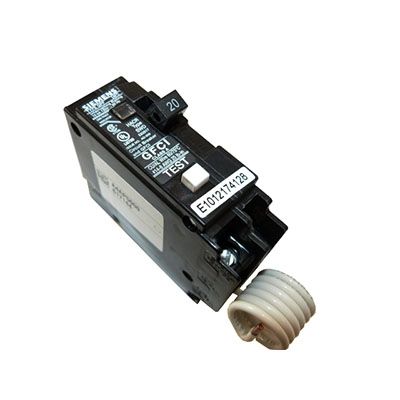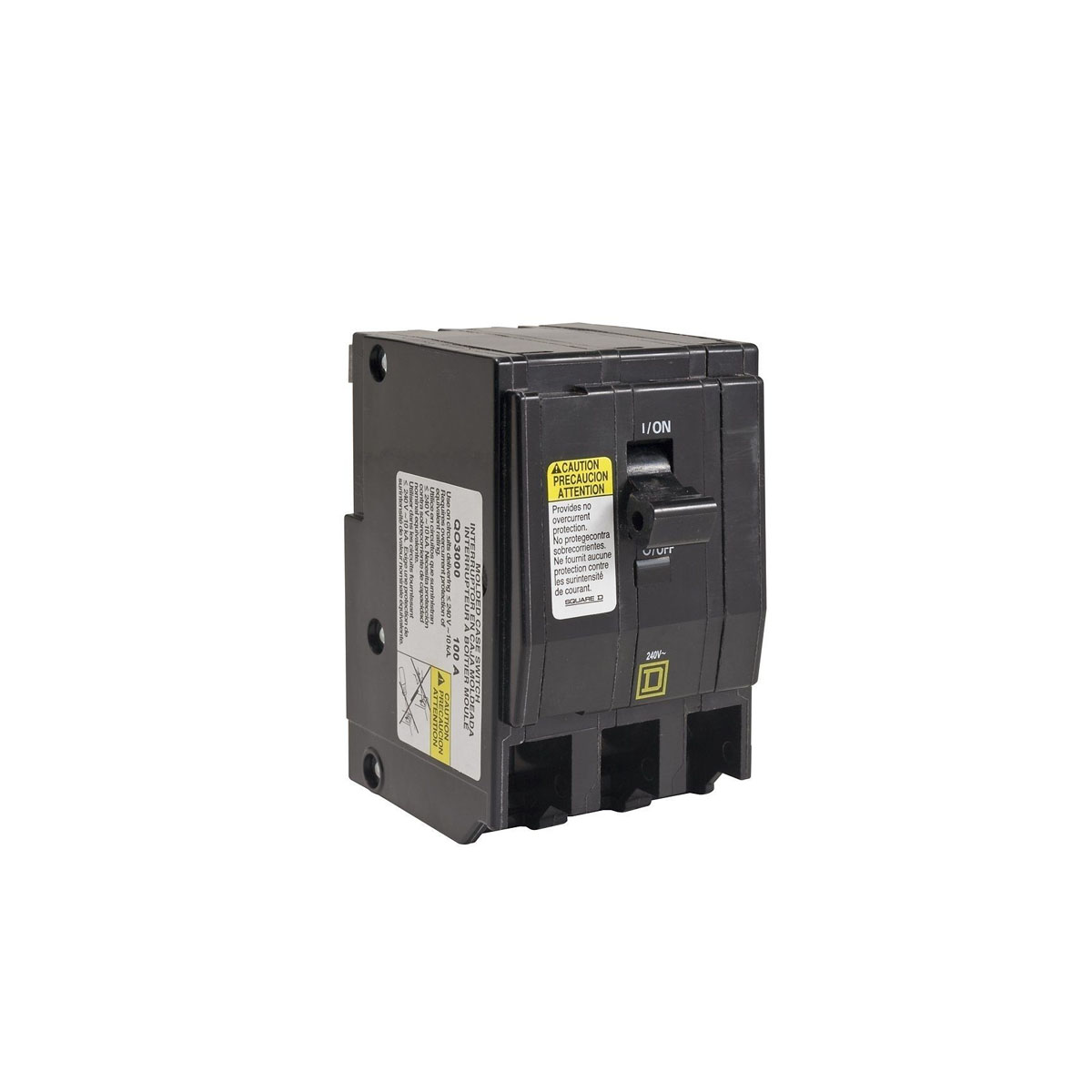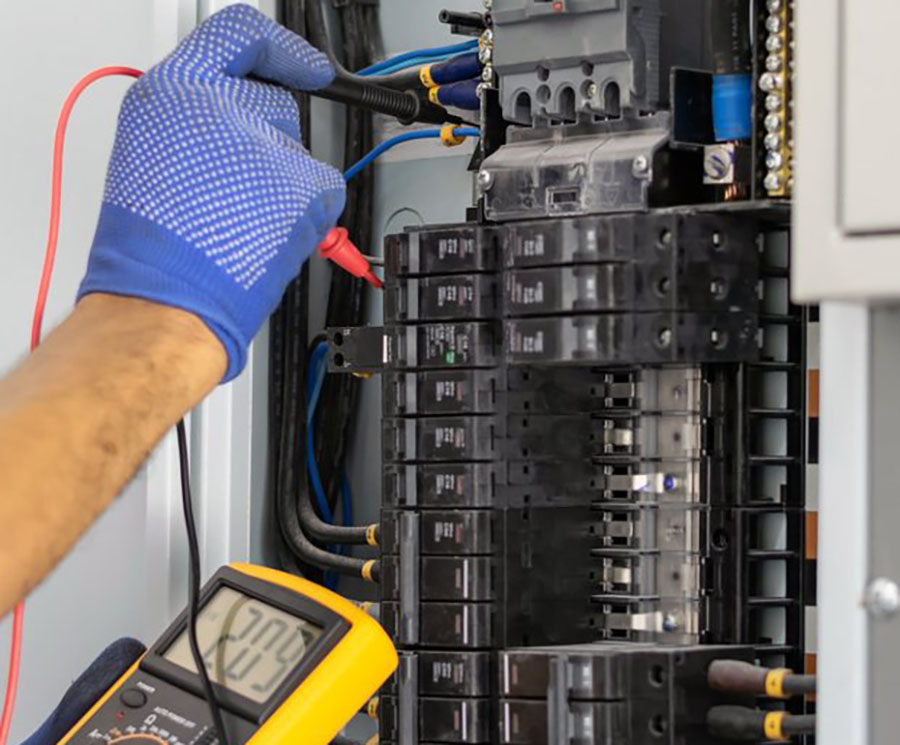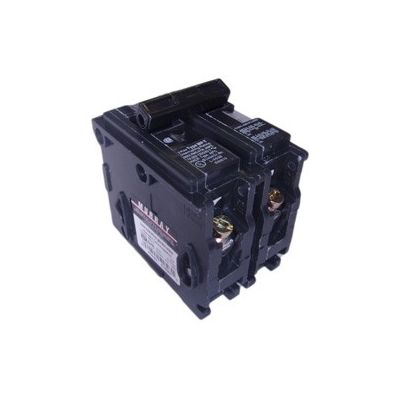The electrical circuit breakers in your home are essential devices. They’re safety devices that prevent damage from electrical hazards such as fire or electric shock.
These electrical hazards are typically caused when the current draw on the circuit becomes too large. When this happens, circuit breakers are designed to switch off automatically, preventing further damage.
Along with regular breakers, there are GFCI breakers that provide additional protection and safety.
A GFCI or ‘ground fault circuit interrupter’ breaker can help prevent electrocution. GFCI breakers do this by automatically detecting when a circuit is grounding out—such as the circuit coming into contact with water—and flipping off the breaker immediately.
This safety shutoff process happens in microseconds and prevents the flow of electricity and undue harm. As a result, installing GFCI breakers in your home can be life-saving.
Now that we’ve discussed some of the reasons for GFCI breakers let’s cover how to install a GFCI breaker.
Before installing the GFCI breaker:
You should accomplish certain things before installing a GFCI breaker, such as selecting the specific breaker you will use and ensuring it is compatible with your existing electrical panel.
Unfortunately, not all electrical panels are the same, and neither are GFCI breakers, which is why it can be challenging to select the correct GFCI breaker for your project.
Choosing the correct physical size and the proper current/voltage rating is critical. Additionally, you will need to ensure adequate safety is taken into account. Working on an electrical system can be dangerous, and you want to avoid damaging your existing system or harming yourself during the installation process.
Choosing the correct GFCI breaker:
There are hundreds of different manufacturers of GFCI breakers, and to make matters more complicated, there are various sizes, voltages, and amperage ratings on GFCI breakers. Additionally, not all electrical panels and breakers are universally compatible.
Therefore, when you prepare to install a new GFCI breaker, you need to make sure it is compatible with the panel. The electrical panel should include the types of breakers it has compatibility within its specifications. If this information is not readily available, you can use the manufacturer and model number and search online for their circuit breaker compatibility. However, you can usually determine the proper size just by looking at the electrical breaker panel door.
If you are replacing a GFCI breaker, you should replace it with the same brand and model if possible. While some breakers appear interchangeable based on size, looks can be deceiving, and it is best to match the recommended model. Replacing a GFCI breaker with a different brand can lead to dangerous consequences, cause you to fail an electrical inspection, and possibly void the panel’s warranty.
The load of the circuit will determine the load capacity you will need on the replacement GFCI breaker. You should only take up 80% of the rated maximum load.
To assess the capacity of your circuit, add up the amp rating of all the electrical devices that will connect to it. This includes things such as appliances, televisions, hairdryers, etc. If you are not sure about the proper circuit load for your GFCI breaker, contact an electrician in your local area.
Practice safety first:
Safety should be your number one priority when replacing a GFCI breaker. Electrical work can be dangerous, and if you lack the training and skills, you should hire a licensed electrician to do the work. In addition, many areas require permits for even minor jobs—such as replacing a breaker—because high voltage is involved.
Check the National Electrical Code (NEC) or your local electrical code for more details.
Here are the proper safety protocols you should follow:
- Always turn off the main breaker when working on the breaker box/electrical panel.
- The wires providing power (supply) in the electrical panel always have electricity running to them—don’t touch them.
- Don’t replace a GFCI breaker with one that has a higher amp rating.
- Only add additional GFCI breakers if the panel has open slots.
- Test GFCI breakers using the “test” button every so often to ensure they are functioning correctly.
- Remember: the bus bar may still be energized even if the main breaker is off.
- Bring a light source so you can see your work.
- When connecting wires to the GFCI breakers, make sure the hot and neutral wires are not touching.
- Do not work alone. Make sure you have a friend or partner there to help in case of electric shock.
Always make sure you use the proper rating and sized breaker in your panels. GFCI breakers are designed to prevent electrical overload, short circuits, and ground faults. Therefore, it is essential to install them correctly.
Always shut off the power.
This is the most critical safety concern when replacing a breaker, so it deserves restating: Always turn the main breaker off when servicing your electrical panel or breaker box. This can be the difference between a successful install or a trip to the emergency room.
Tools you’ll need:
To install a GFCI breaker, you’ll need to come prepared with the right equipment and materials. Here is what you will need to carry out the job:
- Wire strippers
- Voltage tester or multi-meter
- Phillips-head screwdriver
- Flashlights or light source
- Slotted screwdriver
- Electrical tape
- Pliers
- GFCI circuit breaker
- Access to the breaker box
Step-by-step instructions: how to install a GFCI breaker.
Installing a GFCI breaker in your electrical panel is not a simple task. However, the process is not much different than installing a standard breaker. After you’ve ensured you have the correct brand, model, and voltage/current capacity, here are the steps you should follow for the installation:
- Turn off the main breaker switch—take off the "dead front cover" of the electrical panel while avoiding touching any of the wires inside of it. After the power is off, test the circuit and wires with the voltage tester to verify no electricity is being supplied. The voltage tester should show “zero” volts for every test.
- Connect the GFCI breaker to the desired circuit in the electrical panel. With the GFCI breaker switched off, use a screwdriver to connect the hot wire to the “hot” or “load” screw terminal and the neutral wire to the “neutral” screw terminal on the GFCI breaker. Next, connect the GFCI breaker’s coiled white wire to the neutral bus bar on the service panel, but always use an open screw terminal. Never connect more than one breaker wire to a single terminal. Ensure all the screw terminals are tight and all the wires are connected to their correct screw terminals.
- Insert the GFCI breaker into the breaker box. How to insert the breaker into the panel will vary depending on the manufacturer, so be sure to follow their specific instructions. Many GFCI breakers have a notch that snaps directly into the rail on the outer side of the service panel. The inside portion of the breaker typically fits straight into a tab on the panel’s bus bar.
- Test the GFCI breaker. Place the panel cover back on and turn off all branch circuit breakers and all appliances connected to the newly installed GFCI breaker. Next, turn on the main breaker, followed by the new GFCI breaker. Lastly, test the GFCI breaker by following the instructions provided by the manufacturer.
If any of these steps feel too complicated or you’re unsure whether you've done it correctly, we strongly suggest you consider hiring a licensed electrician. Remember, incorrectly installing the GFCI breaker could lead to an inspection failure or an electrical hazard. Keep in mind that this guide is a for informational purposes only and should not be used as your only reference for your project.
Conclusion
Ground fault circuit interrupter (GFCI) breakers provide ground fault protection to the entire circuit branch, covering all the outlets in a specific room. They are relatively easy to install but require the correct tools, materials, and safety precautions. We outlined the installation steps in this guide, but you can contact a licensed electrician for assistance if you need help.




